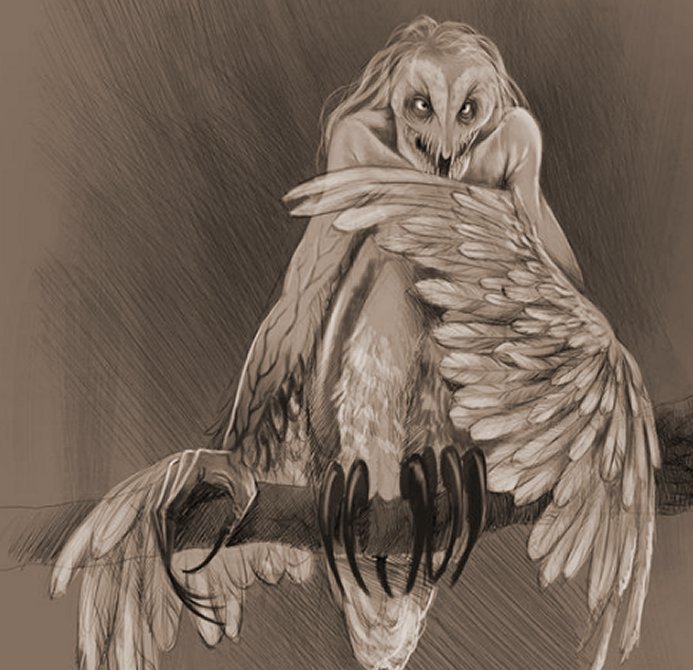Strzyga (Strix): Slavic Malevolent Winged Female Demon With Two Souls That Usually Haunts Churches, Towers, Barns
A. Sutherland - AncientPages.com - In Slavic mythology, this winged demon is called Strzyga (in Polish). In beliefs of other cultures is known as Strix (Strigoi). Rarely known in the male form, Strzyga is somewhat similar to vampire.
Strzyga, an artistic vision by Filip Gutowski. Excerpt from The Sarmatian Bestiarium by Janek Sielicki. Image credit: Filip Gutowski - Janek Sielicki - CC BY-SA 4.0
In the Greco-Roman beliefs, a witch was called a strix (Strigoi), who took the form of a bird under the cover of the night. In beliefs of classical antiquity, the strix, was a bird of bad omen.
According to some accounts, this ominous large-headed bird had a human face, human fingers that were curved like claws, greyish white bat wings, yellow transfixed eyes, four legs and a long, voracious beak, which was used to suck the blood of its victims or fed on their bodies. Her breath was believed to be poisoned and her victims were most often sleeping infants.
But among ancient Greeks and Romans, this malevolent creature fed more often, on ‘spiritus vitae’, the life force (literally ‘breath of life’) of the victim. A cemetery was believed to be the creature’s favorite place, where its crying was usually heard at night-time.
Where Did This Demon Come From?
The souls of people, who were born with two hearts, two souls, and a double row of teeth, are left to be stalked; they usually become the strixes. In the first life, they are mostly harmless and not much different from other people, because their second raw of teeth is almost invisible. Later, when their true destiny comes out, they suffer because of their otherness.
See also
Stikini ‘Man-Owl’ – Sinister Vampiric Monster That Works In Disguise
Dearg-Due Frightening Female Demon And Tyrannical Abhartach Of Irish Folklore
Camazotz: “Death Bat” Vampire God In Ancient Maya Beliefs
Empusa – Shape-Shifting Evil Female Demon In Greek Myth And Folklore
In Slavic beliefs, the Strzyga usually dies at a young age, but when one soul leaves, the other survives to begin hunt.
Many of them can turn into owls; they are lonely hunters, do not join others living in clusters and have no other desires than satisfy hunger.
Sometimes, they want revenge for the harm they suffered in their first life.
Is It Possible to Defend Against This Vampire?
It was possible to defend against the strix by hanging branches of hawthorn in the window, sprinkling the threshold with water, or giving it to drink the blood of a pig, a substitute for child's blood.
The creature could be recognized by the characteristic blue glow that surrounded its body at night. Their victims could be recognized by the fact that the left eye always remained open and immobile.
The ancient Romans believed that their goddess Carna, patron of the door, was also a divine babysitter and a protector, who, by means of magical spells, chased away the strix. When the strix occasionally appeared in the church tower at night, this ominous bird heralded an imminent death to all who were within her sight.
Strzyga And Witch Hunt
In later folklore dated the 16th century, these demonic creatures used to attend a witches' Sabbath, where they fought with each other. If an accidental mortal strayed in the area and witnessed such a fight, he ended up being beaten and with the arrival of dawn losing his memory of the whole event or speech.
Along with sunrise, or with the early morning ringing of church bells, they had to end their night activities and go back to abandoned houses to deal with weaving, spinning wool, and sewing linen shirts for themselves. If they had not left at the appointed time, they were supposed to crumble in half and lose their powers, similar to vampires when their powers are often limited during the day or in daylight.
Also Stikini (‘man-owl’), in ancient folklore of the Seminole Indians of Oklahoma had to return back before dawn because sunlight had disastrous consequences for the creature’s supernatural abilities to turn back into human shape. Likewise, the all-knowing dwarf Alvis in Norse mythology, who forgot that his kind could never face the light of day, and disappeared.
Written by – A. Sutherland - AncientPages.com Senior Staff Writer
Updated on Apr 11, 2024
Copyright © AncientPages.com All rights reserved. This material may not be published, broadcast, rewritten or redistributed in whole or part without the express written permission of AncientPages.com
Expand for referencesReferences:
Whitacre D. Neotropical Birds of Prey
Sherman, Storytelling. An Encyclopedia of Mythology and Folklore
More From Ancient Pages
-
 Sumerian God Enki – Commander Of Eridu
Featured Stories | Sep 8, 2015
Sumerian God Enki – Commander Of Eridu
Featured Stories | Sep 8, 2015 -
 Rare Gilded Mask Discovered On Mummy Of Ancient Egyptian Priest Serving Sky Goddess Mut
Archaeology | Jul 17, 2018
Rare Gilded Mask Discovered On Mummy Of Ancient Egyptian Priest Serving Sky Goddess Mut
Archaeology | Jul 17, 2018 -
 Little People: Ancient Race That Pre-Dates The Celts, Anglo-Saxons And The Arrival Of Indians
Featured Stories | Nov 16, 2023
Little People: Ancient Race That Pre-Dates The Celts, Anglo-Saxons And The Arrival Of Indians
Featured Stories | Nov 16, 2023 -
 Suomenlinna Fortress: Impressive ‘Castle Of Finland’ Has Rich History
Featured Stories | Feb 13, 2016
Suomenlinna Fortress: Impressive ‘Castle Of Finland’ Has Rich History
Featured Stories | Feb 13, 2016 -
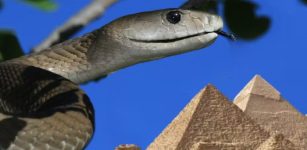 Brooklyn Papyrus Reveals Ancient Egypt Had Far More Venomous Snakes Than The Country Today
Featured Stories | Oct 24, 2023
Brooklyn Papyrus Reveals Ancient Egypt Had Far More Venomous Snakes Than The Country Today
Featured Stories | Oct 24, 2023 -
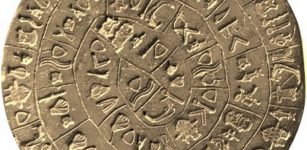 Controversial Artifact: What Kind Of Message Does The Phaistos Disk Contain?
Artifacts | May 13, 2014
Controversial Artifact: What Kind Of Message Does The Phaistos Disk Contain?
Artifacts | May 13, 2014 -
 In Ancient Times We Had Weeks Of Different Lengths
Ancient History Facts | Sep 6, 2016
In Ancient Times We Had Weeks Of Different Lengths
Ancient History Facts | Sep 6, 2016 -
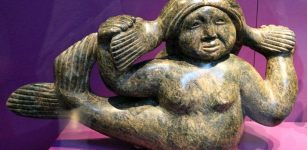 Sedna: Inuit Goddess Sacrificed By Selfish Father Fearing For His Own Life
Featured Stories | Jan 7, 2020
Sedna: Inuit Goddess Sacrificed By Selfish Father Fearing For His Own Life
Featured Stories | Jan 7, 2020 -
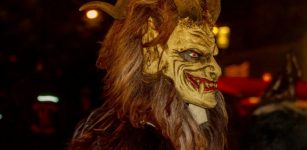 Ördög – Shapeshifting Demon Who Controls The Evil And Dark Forces In The World
Featured Stories | Oct 23, 2019
Ördög – Shapeshifting Demon Who Controls The Evil And Dark Forces In The World
Featured Stories | Oct 23, 2019 -
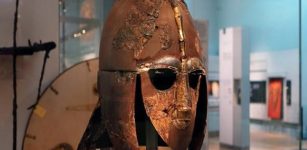 Burial Practices In Unified Cultures Of Early Medieval Europe
Archaeology | Jan 22, 2021
Burial Practices In Unified Cultures Of Early Medieval Europe
Archaeology | Jan 22, 2021 -
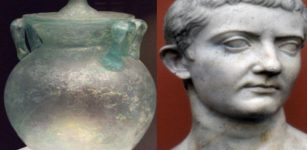 Flexible Glass – Lost Ancient Roman Invention Because Glassmaker Was Beheaded By Emperor Tiberius
Ancient Technology | Jul 27, 2023
Flexible Glass – Lost Ancient Roman Invention Because Glassmaker Was Beheaded By Emperor Tiberius
Ancient Technology | Jul 27, 2023 -
 Unknown 2,000-Year-Old Settlement Hidden In The Polish Tuchola Forest Revealed By LIDAR
Archaeology | Feb 18, 2019
Unknown 2,000-Year-Old Settlement Hidden In The Polish Tuchola Forest Revealed By LIDAR
Archaeology | Feb 18, 2019 -
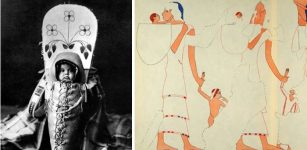 Baby Carriers Were Used 10,000 Years Ago – New Evidence
Archaeology | Sep 27, 2022
Baby Carriers Were Used 10,000 Years Ago – New Evidence
Archaeology | Sep 27, 2022 -
 Societies In Iberian Peninsula Deployed “Escape Economics” 4,000-Year-Old
Archaeology | Sep 28, 2022
Societies In Iberian Peninsula Deployed “Escape Economics” 4,000-Year-Old
Archaeology | Sep 28, 2022 -
 Shennong – Chinese ‘King Of Medicines’ Who Invented Farming Tools And Herbs For Treating People’s Diseases
Chinese Mythology | Oct 13, 2021
Shennong – Chinese ‘King Of Medicines’ Who Invented Farming Tools And Herbs For Treating People’s Diseases
Chinese Mythology | Oct 13, 2021 -
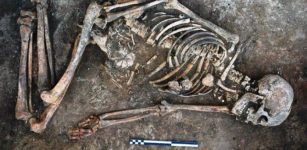 Unique Bones Decorated With Black Markings Discovered In 4,500-Year-Old Tomb In Ukraine
Archaeology | Jul 30, 2018
Unique Bones Decorated With Black Markings Discovered In 4,500-Year-Old Tomb In Ukraine
Archaeology | Jul 30, 2018 -
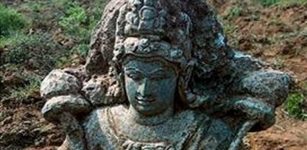 10th Century Sculpture Of Sun God Surya Accidentally Found In Farmland In Andhra Pradesh
Archaeology | Nov 16, 2020
10th Century Sculpture Of Sun God Surya Accidentally Found In Farmland In Andhra Pradesh
Archaeology | Nov 16, 2020 -
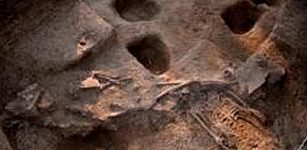 Iron Age Site Of Khok Phutsa Excavated In Thailand
Archaeology | Apr 15, 2019
Iron Age Site Of Khok Phutsa Excavated In Thailand
Archaeology | Apr 15, 2019 -
 6,000-Year-Old Vast Settlement With Tools And Granite Structures Unearthed In Sotta, Corsica In France
Archaeology | May 16, 2023
6,000-Year-Old Vast Settlement With Tools And Granite Structures Unearthed In Sotta, Corsica In France
Archaeology | May 16, 2023 -
 Scotland’s First Farmers Didn’t Need Manure To Fertilize Their Fields – The Land Was Still Very Productive
Archaeology | Oct 12, 2022
Scotland’s First Farmers Didn’t Need Manure To Fertilize Their Fields – The Land Was Still Very Productive
Archaeology | Oct 12, 2022


